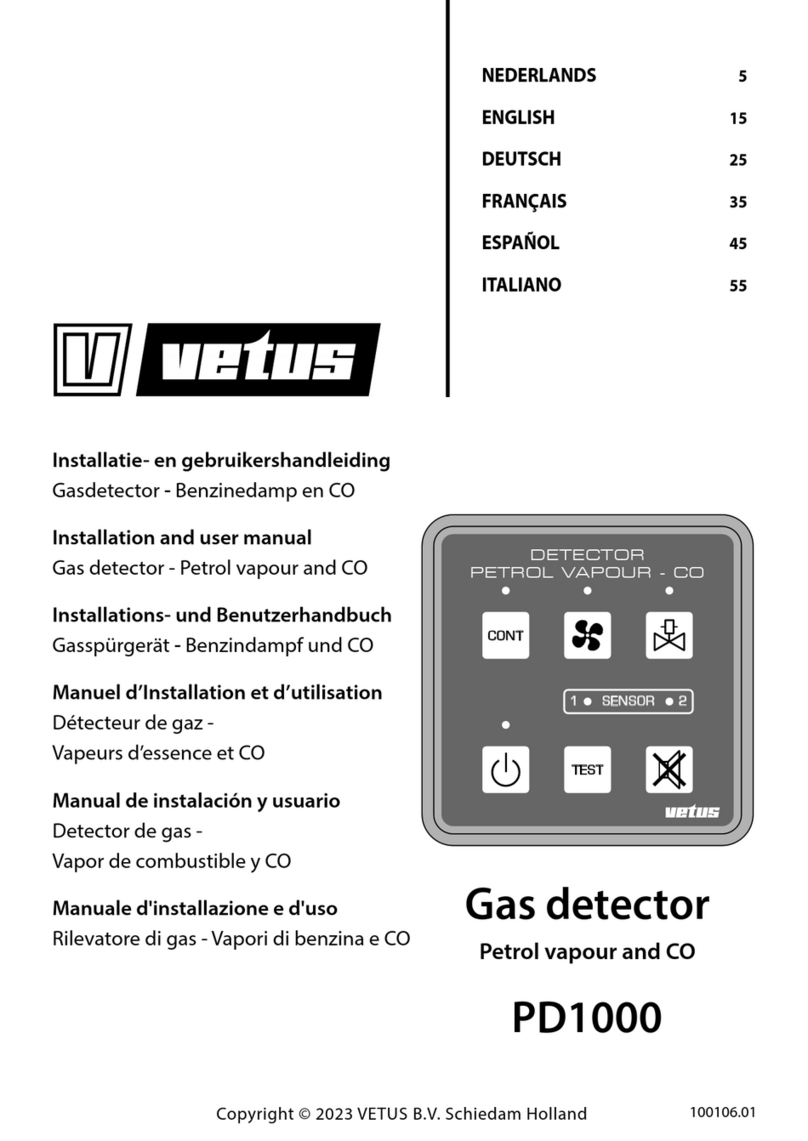
6 100106.01 Gasdetector PD1000
3 Bediening
3.1 Aan- en uitschakelen
Inschakelen : Druk eenmaal kort op de toets.
Uitschakelen : Druk de toets in en houdt deze 5
seconden ingedrukt.
Na het inschakelen zal de gasdetector continue op de
aanwezigheid van gas controleren.
De LED boven de toets zal aan gaan. Deze LED zal
gaan knipperen als de accuspanning te laag is.
Bij het inschakelen van de voedingsspanning wordt
de gasdetector automatisch ingeschakeld, dit om te
voorkomen dat u vergeet hem in te schakelen.
Na ca 1 minuut is de sensor opgewarmd en zal de gasdetector op betrouwbare
wijze de aanwezigheid van gas kunnen detecteren. Tijdens het opwarmen van de
sensor wordt getest of een sensor is aangesloten en of deze correct functioneert.
3.2 Continue of intermitterend controleren op de aanwezigheid van gas
De gasdetector kan naar keuze continue of intermitterend op de aanwezigheid van gas
controleren.
In de intermitterende stand worden de gassensoren 1 minuut ingeschakeld en vervol-
gens 2 minuten uitgeschakeld. Het gemiddelde stroomverbruik is in deze stand lager
dan in de stand continue.
Standaard staat de gasdetector in de stand continue.
Omschakelen van de stand continue naar intermitterende stand of andersom wordt
gedaan door de CONT toets in te drukken. In de stand continue is de groene LED boven
de CONT toets aan.
Als de afsluiter wordt geopend, zie 3.7 wordt automatisch de gasdetector in de stand
continue gezet.
Gebruik bij de stand continue als er personen aan boord zijn.
Gebruik de stand intermitterend als u niet aan boord van het schip verblijft.
3.3 Testen
De werking van de gasdetector kan worden getest door de testcyclus te activeren. Na
het indrukken van de TEST toets wordt gedurende 7 seconden een schijnalarm uitge-
voerd. Tijdens dit schijnalarm wordt het volgende getest:
- de werking van de sensoren,
- de werking van het akoestisch alarm,
- het correct functioneren van de bediening van de brandstofafsluiter en de ventilator;
de afsluiter wordt gesloten en de ventilator wordt ingeschakeld.
Continue controleert de gasdetector of de sensor (of sensoren) zijn aangesloten en of
ze correct functioneren. Indien dit niet het geval is wordt een alarm gegeven.
vetus
SENSOR1 2
DETECTOR
PETROL VAPOUR - CO
CONT
TEST




























